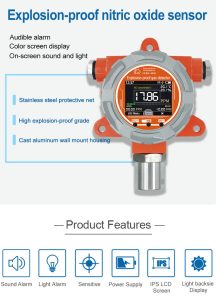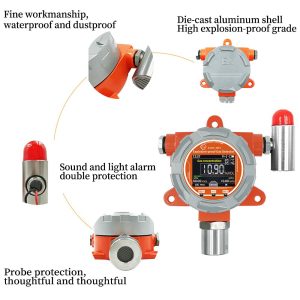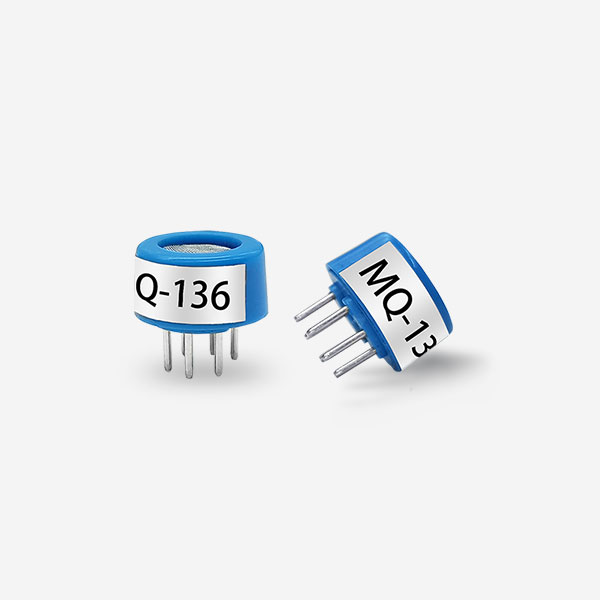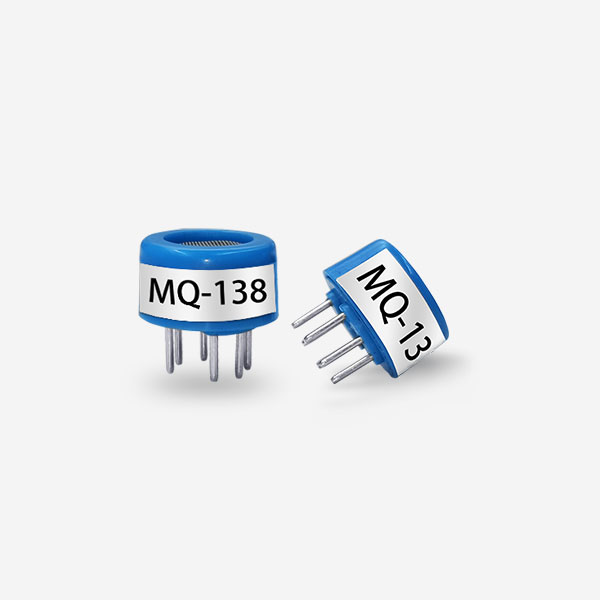-
Gas Sensor Technology: A Comprehensive Review
- Gas sensor technology has undergone significant advancements in recent years, finding widespread applications in various domains such as environmental monitoring, industrial safety, healthcare, and automotive systems. This comprehensive r……
- Chat Online
-
Description

Gas sensor technology has undergone significant advancements in recent years, finding widespread applications in various domains such as environmental monitoring, industrial safety, healthcare, and automotive systems. This comprehensive review article aims to explore the different types of gas sensors, their underlying principles of operation, materials used, and current advancements. We delve into the critical aspects of sensor performance, including sensitivity, selectivity, stability, and response time. Furthermore, we discuss the challenges faced by the gas sensor industry and provide insights into future trends and research directions.

Keywords: Gas sensors, chemical sensors, sensing materials, environmental monitoring, industrial safety
1. Introduction
Gas sensors are essential devices for detecting and measuring the concentration of specific gases in an environment. They play a crucial role in numerous applications, from monitoring air quality and detecting harmful emissions to ensuring safety in industrial settings and diagnostic healthcare practices. The increasing awareness of environmental issues, stringent regulations regarding worker safety, and advancements in material science have fueled the development of innovative gas sensor technologies.
This review covers a broad spectrum of gas sensor technologies, from traditional electrochemical sensors and semiconductor-based sensors to emerging technologies such as optical sensors and nanosensors. We discuss the operational principles, advantages, and limitations of each type, emphasizing the materials and fabrication techniques used. Furthermore, we provide an overview of the current state-of-the-art and outline future research directions to enhance sensor performance and broaden their application scope.
2. Types of Gas Sensors
Gas sensors can be broadly classified into several categories based on their sensing principles and methodologies. Below, we present a detailed overview of the most common types of gas sensors.
2.1. Electrochemical Sensors
Electrochemical sensors operate by measuring the electrical current produced when a gas reacts with an electrolyte in a electrochemical cell. These sensors are highly sensitive and selective, especially for gases like oxygen, carbon monoxide, nitrogen oxides, and hydrogen sulfide. They are typically compact, low-cost, and suitable for real-time monitoring.
One common type of electrochemical sensor is the galvanic cell sensor, which relies on the spontaneous chemical reaction between the gas and the electrolyte to generate a current. Another type is the amperometric sensor, which uses an external potential to drive the reaction and measure the resulting current. Potentiometric sensors, on the other hand, measure the potential difference developed between two electrodes in the presence of the target gas.
2.2. Semiconductor-Based Sensors
Semiconductor-based sensors, especially metal oxide semiconductors (MOS), are widely used due to their low cost, simplicity, and robustness. These sensors operate on the principle that the conductivity of the semiconductor material changes when it adsorbs gas molecules.
MOS sensors are typically made of materials like tin dioxide (SnO2), zinc oxide (ZnO), and tungsten oxide (WO3). When exposed to a reducing gas (e.g., hydrogen, carbon monoxide), the conductivity increases, while it decreases in the presence of an oxidizing gas (e.g., nitrogen dioxide, ozone). The sensitivity and selectivity of these sensors can be enhanced by doping the semiconductor material with catalysts or modifying its surface.
2.3. Optical Sensors
Optical sensors utilize changes in optical properties, such as absorption, reflectance, fluorescence, or Raman scattering, to detect gases. These sensors are highly selective and can operate at room temperature, making them suitable for a wide range of applications.
Absorption-based sensors measure the attenuation of light as it passes through a gas-filled chamber. Reflectance-based sensors detect changes in the reflectivity of a surface coated with a gas-sensitive material. Fluorescence-based sensors use the quenching effect of gases on the fluorescence intensity of specific materials. Raman scattering sensors, on the other hand, detect changes in the Raman spectrum of the gas molecules.
2.4. Nanosensors
Nanosensors, especially those based on carbon nanotubes (CNTs) and graphene, have emerged as promising candidates due to their exceptional electrical, mechanical, and chemical properties. CNT-based sensors can detect gases through changes in their conductivity or resistance upon gas adsorption. Graphene-based sensors utilize changes in their charge carrier concentration or mobility.
The high surface-to-volume ratio of nanomaterials enables nanosensors to achieve high sensitivity and fast response times. However, challenges such as reproducibility, stability, and scalability need to be addressed for their widespread commercialization.
2.5. Catalytic Sensors
Catalytic sensors operate by measuring the change in electrical resistance of a heated catalytic element when it reacts with a target gas. These sensors are commonly used in automotive applications to detect gases like carbon monoxide, hydrocarbons, and nitrogen oxides.
The catalytic element, typically a metal like platinum or palladium, is heated to a high temperature to catalyze the oxidation or reduction of the target gas. The resulting change in temperature or resistance is measured and correlated to the gas concentration. Catalytic sensors are known for their robustness and long-term stability but may suffer from cross-sensitivity to other gases.
3. Materials and Fabrication Techniques
The performance of gas sensors largely depends on the materials used and the fabrication techniques employed. Below, we discuss the most commonly used materials and fabrication methods.
3.1. Sensing Materials
Sensing materials play a crucial role in determining the sensitivity, selectivity, and stability of gas sensors. The choice of material depends on the target gas, operating conditions, and desired sensor characteristics.
Metals and metal oxides are widely used due to their catalytic properties and ability to undergo changes in conductivity upon gas adsorption. Polymers and composites offer tailorable selectivity and sensitivity, making them suitable for detecting specific gases. Carbon-based materials, such as CNTs and graphene, exhibit exceptional electrical and chemical properties, enabling high-performance gas sensing.
3.2. Fabrication Techniques
Fabrication techniques for gas sensors range from simple thin-film deposition to complex micro- and nanofabrication processes. Techniques such as sputtering, chemical vapor deposition (CVD), and sol-gel processing are commonly used to deposit sensing materials onto substrates.
Nanofabrication techniques, including electron beam lithography, focused ion beam milling, and self-assembly, enable the creation of highly sensitive and selective nanosensors. These techniques allow for precise control over the size, shape, and composition of the sensing elements, enabling tailored sensor performance.
4. Performance Metrics
Evaluating the performance of gas sensors involves several key metrics, including sensitivity, selectivity, stability, response time, and recovery time.
4.1. Sensitivity
Sensitivity refers to the sensor's ability to detect and respond to changes in gas concentration. It is typically measured as the change in sensor output (e.g., resistance, current, or optical signal) per unit change in gas concentration. High sensitivity is desirable for detecting low concentrations of target gases.
4.2. Selectivity
Selectivity is the sensor's ability to distinguish between different gases. A highly selective sensor will respond only to the target gas and ignore interferences from other gases. Enhancing selectivity often involves material modification or the use of selective filters and membranes.
4.3. Stability
Stability refers to the sensor's ability to maintain consistent performance over time and under varying environmental conditions. Long-term stability is crucial for reliable and accurate gas detection. Factors such as material aging, environmental contaminants, and temperature fluctuations can affect sensor stability.
4.4. Response and Recovery Time
Response time is the time it takes for the sensor to reach a stable output after exposure to the target gas. Recovery time is the time required for the sensor to return to its baseline output after the gas is removed. Fast response and recovery times are desirable for real-time monitoring applications.
5. Challenges and Future Directions
Despite significant advancements, gas sensor technology faces several challenges, including cross-sensitivity, temperature dependence, and limited stability over extended periods. Research efforts are focused on developing novel materials and fabrication techniques to overcome these challenges and enhance sensor performance.
5.1. Enhancing Selectivity and Sensitivity
Selective gas sensing remains a significant challenge, especially in complex environments with multiple gas species. One approach is to develop materials with intrinsic selectivity towards specific gases. Another strategy involves the use of filters, membranes, and other physical barriers to separate the target gas from interferences.
Enhancing sensitivity often involves increasing the surface area of the sensing material to promote more efficient gas adsorption. Nanomaterials, with their high surface-to-volume ratio, offer great potential in this regard. However, optimizing the morphology, composition, and porosity of nanomaterials is crucial for achieving the desired sensor performance.
5.2. Improving Stability and Longevity
Long-term stability is essential for reliable gas detection. Factors such as material aging, environmental contaminants, and temperature fluctuations can degrade sensor performance over time. Research is ongoing to develop stable sensing materials and encapsulation techniques to protect the sensing element from environmental damage.
Another challenge is the temperature dependence of many gas sensors. Variations in temperature can affect the sensitivity, selectivity, and response time of sensors. Developing temperature-insensitive materials and sensors that can operate over a wide temperature range is crucial for拓宽应用范围.
5.3. Integration and Miniaturization
The integration of gas sensors with other systems, such as microcontrollers, data acquisition systems, and wireless communication modules, is essential for real-time monitoring and data analysis. Miniaturization of gas sensors is also critical for applications where space is limited, such as wearable devices and micro-electro-mechanical systems (MEMS).
Advancements in micro
-
Recommend:
-
-
Gas Sensor Technology: A Comprehensive Review
Gas sensor technology has undergone significant advancement…
-
How does the gas detector detect gas?
However, not all gas detectors are the same, as different m…
-
What is the difference between gas detectors?
They play a crucial role in ensuring safety in industries s…
-
Characteristics of portable gas detector
Portable gas detectors play a crucial role in ensuring the …
-
 : +86 155 8830 2704
: +86 155 8830 2704 : jxdziot@gmail.com
: jxdziot@gmail.com
